https://www.youtube.com/watch?v=7e5cWMA6kbw
How to Draw Animals

Hi , everyone .
My name is and today I'm gonna be showing you how I go about drawing animals .
So , the first thing I'm gonna do is talk about an animal we're all familiar with and then compare that animal to other mammals to see what the similarities are and what the differences are .
So , this animal kind of looks like this .
It's got a head , it's got a spine , rip cage , pelvis , legs and arms , right .
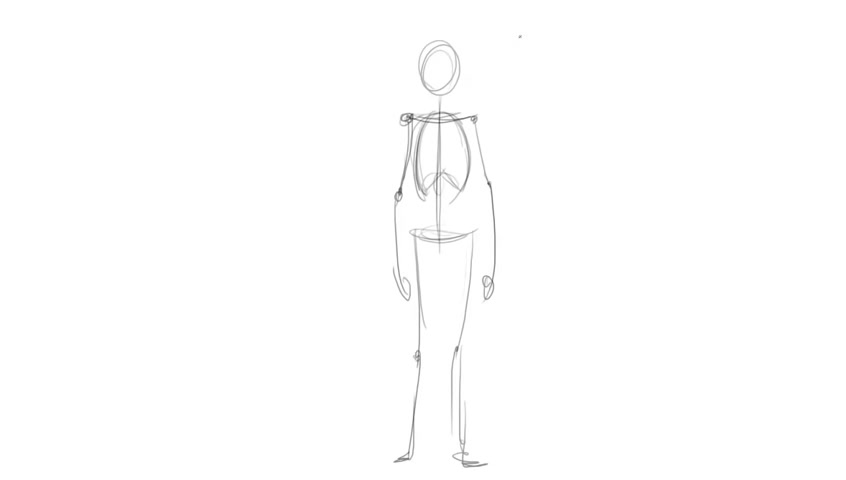
So here we have a person , a human and this is really almost all I need to use as reference to draw virtually any other mammal , uh with the exception of two bones and those are the scapula or shoulder blades .
And these are in the back behind the rib cage and they connect at the collar bone and that's it .
And then they just float , they don't connect on the rip cage at all and they're just held together by uh muscle and tendon .
All right .
So how do we get from here to understanding how to draw other animals ?
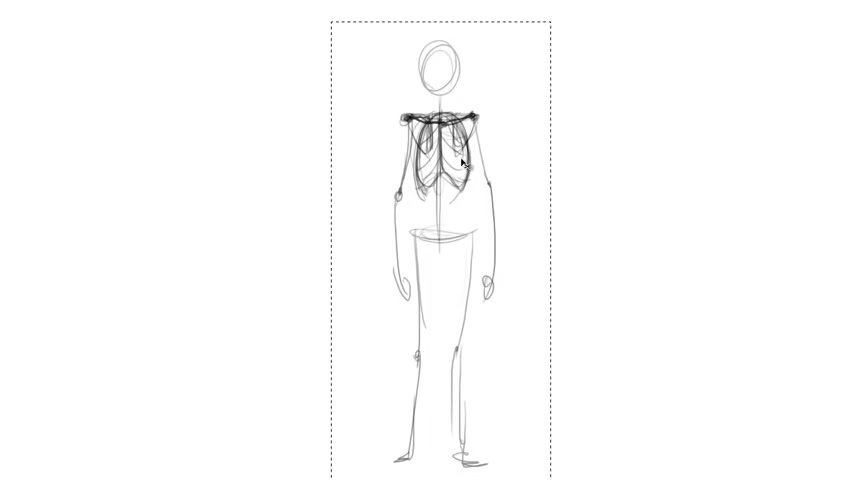
Well , let's move this person up to the side and I'll show you the key is understanding that when it comes to the foundations .
Humans and other mammals really aren't that different .
Both humans and other mammals have heads and spines .
Yes , rib cage .
Pelvis likes 65 arms and scapula .
The difference lies in the proportion of these I've duplicated this figure twice and now let's change some of the proportions of the other two and see what we can come up with .
All right .
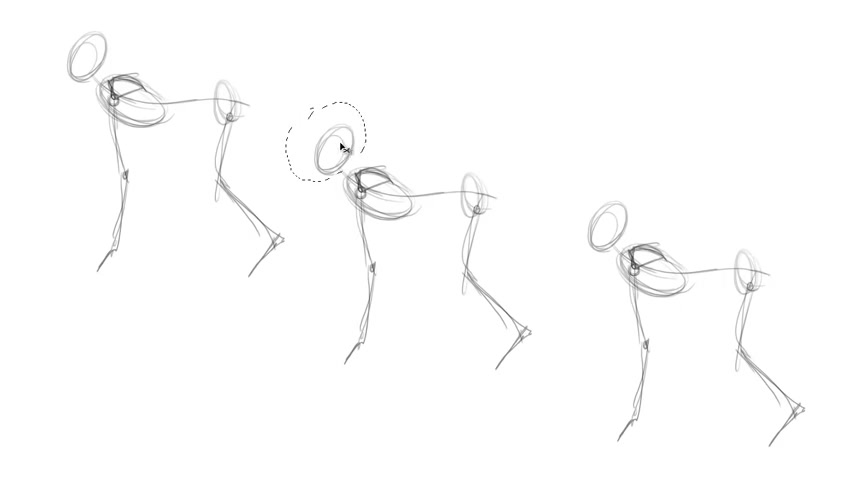
First thing I want to do is make this head smaller and lengthen this neck .
Second thing I'm gonna do is fix some of the proportions of the first guy here because it's kind of bugging me .
Let's give him a head and just place the spine a bit more accurately .
Yes .
Ok .
So moving back , we have the head lengthen the neck .
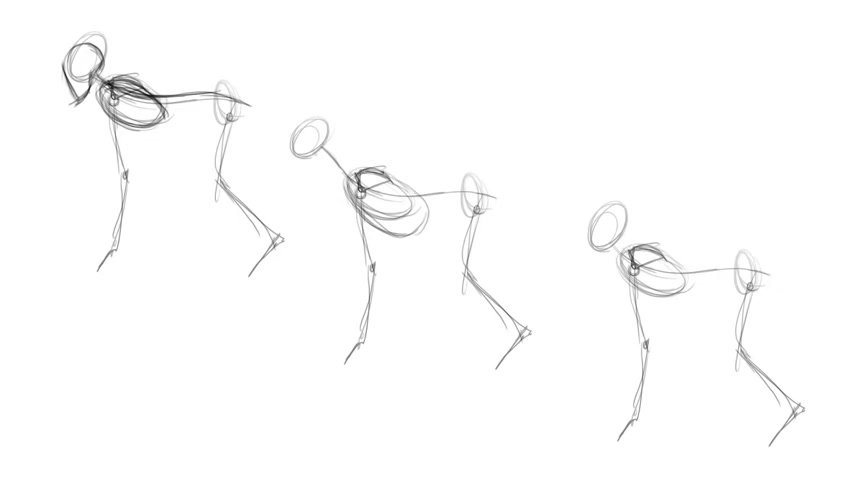
Now , what I'm going to do is increase the size of the rib cage and then I'm gonna change the spine .
So it curves up in this way .
I'm also going to bring the pelvis further back and a bit dangled .
And now for the legs , the upper part of the leg , it's just gonna change your angle because of the change with the pelvis .
And now I'm gonna shorten the lower , the lower half of the line .
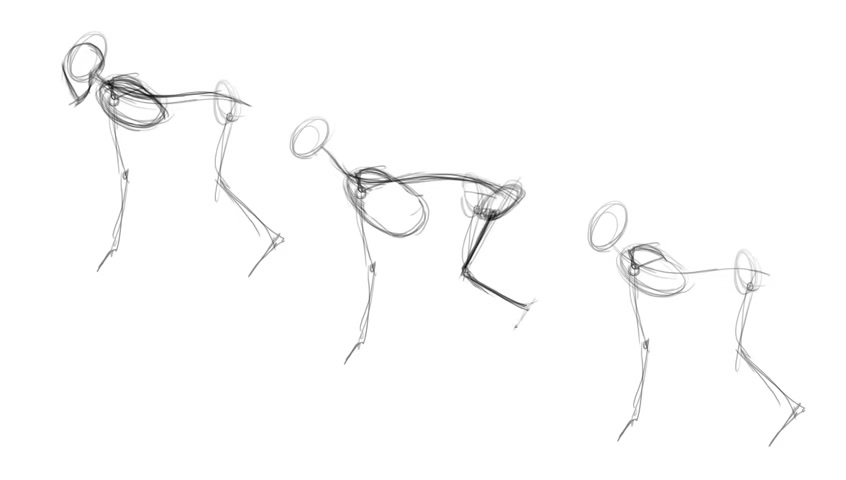
Yes .
Now with our foot , I'm gonna bring the heel , you would be here .
I'm gonna bring that back .
So now there's a , a longer heel bone and then here's the toes .
Now with the arm gonna increase the size of the scapula .
A bit change the angle just a little bit .
I'm gonna shorten the upper half of the arm , shorten the lower half and know where the head would be , can shorten the fingers .
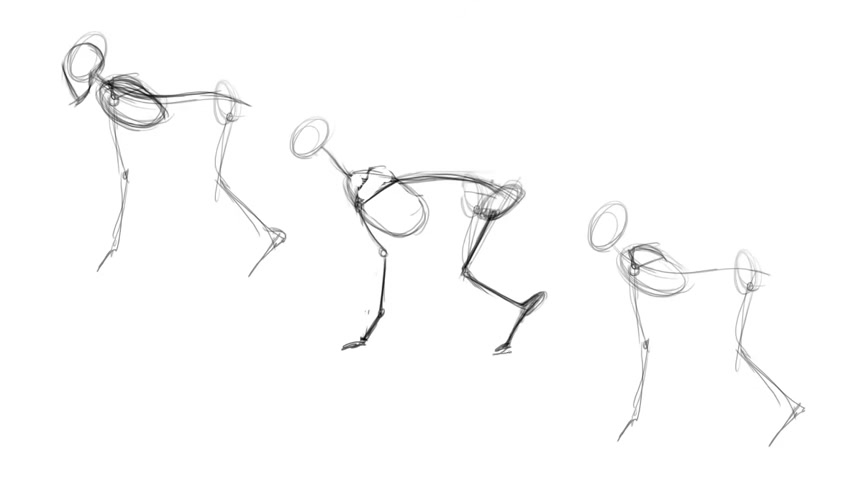
And at the end of the spine is the tailbone and I'm gonna increase the size of that .
And I just realized , I think the pelvis occurs in this way , not that way .
So I just corrected that .
Ok .
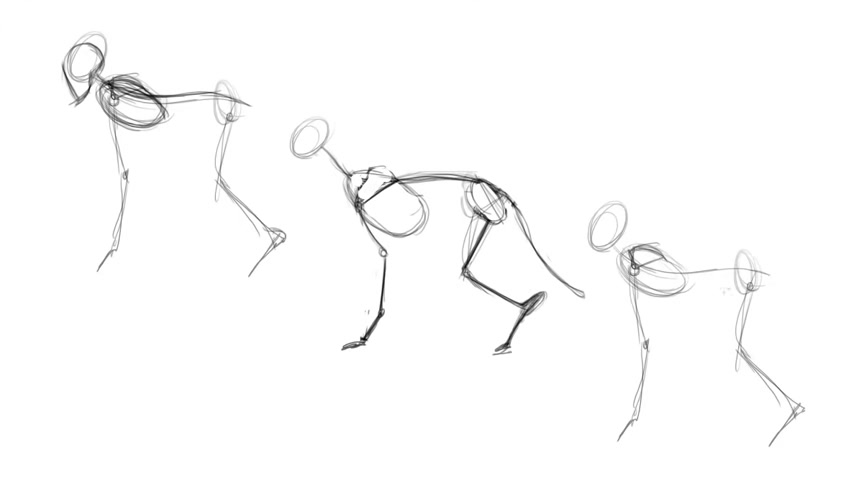
And for its third one , sure , gonna make the spine longer , change the current a bit , gonna make the neck longer , you know , give more oval skull .
No , the rib cage is gonna get significantly bigger .
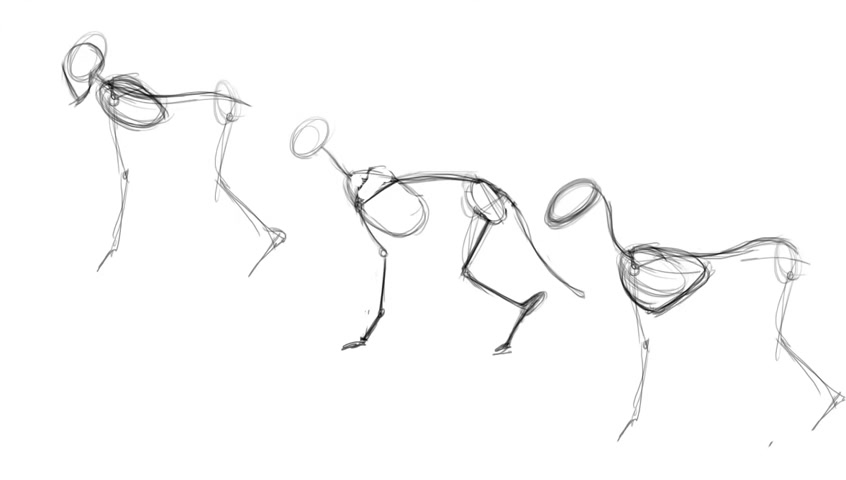
It's gonna really tape her towards the pelvis .
As through the pelvis , it's gonna change your ankle a bit .
And now the upper leg is gonna get much smaller and the lower leg too , we're gonna have a tailbone too .
Think it's extended .
Now , the scapula here that's gonna change a lot from our original guy .
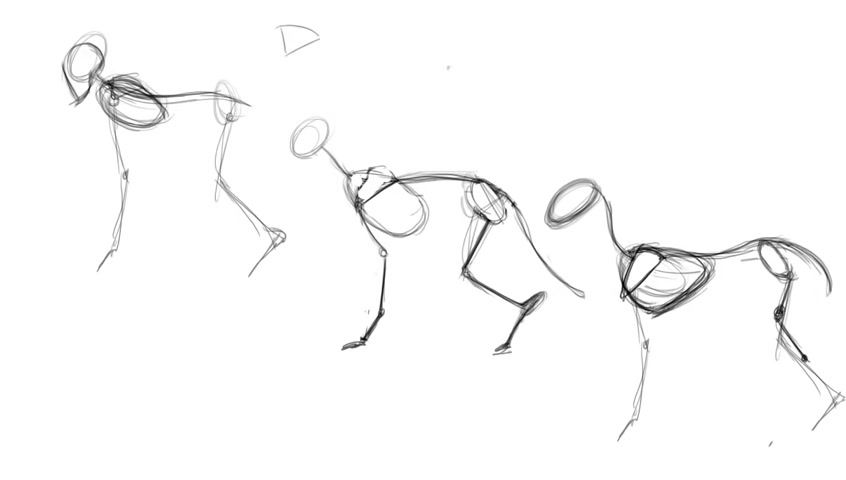
It's gonna really grow and the sheep from this , it's gonna look more like that .
So for the upper arm , here's the shoulder that's gonna get really tiny just like the upper leg got much smaller .
So now the elbow has gone from here to hear it .
Now , here's the lower arm and here's the wrist .
So from here it's gone to here , here is the ankle .
Now , here the heel bone we saw it got much bigger here .
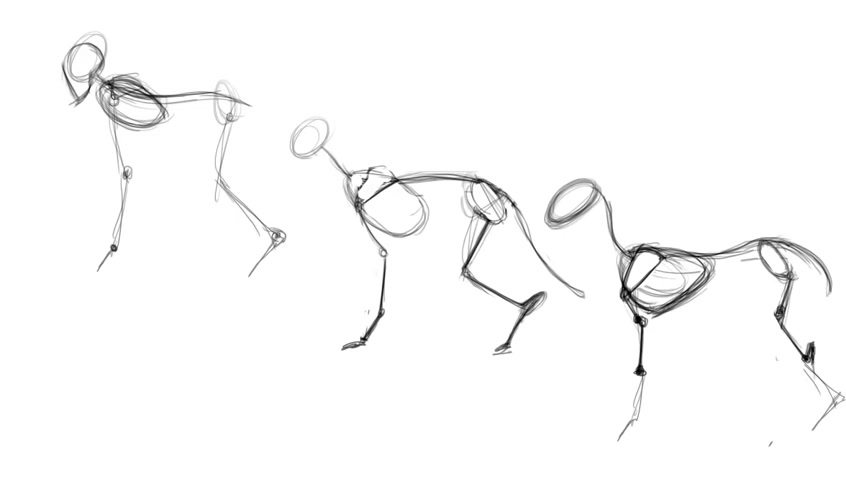
It's not gonna get that much bigger , but the direction is gonna change quite a bit .
And now all this , it's , this , this is the foot and the toes are gonna come out here .
Same thing is gonna happen with the hand .
This is all the hand , the fingers , the ham fingertips .
Ok .
So we have three different proportions and I have to admit it's quite confusing .
So I'm gonna flush these out and we'll see what we get .
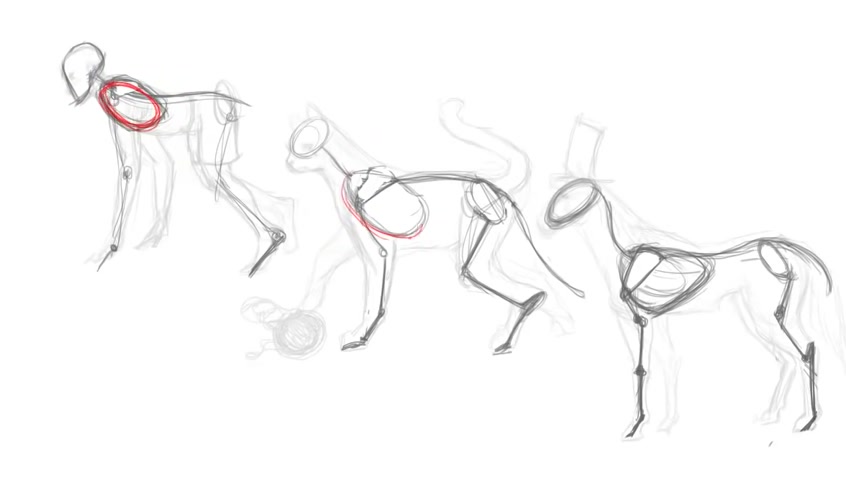
So , as you can see , everything is based off the same forms .
Here's a human rib cage , here's a cat's rib cage and a horse's rib cage .
They all have rib cages .
They're just different in proportion in relation to the body and in shape , same thing with the arm .
A program of the human , a problem with the cat .
The problem of a horse , you can see the angles are the same , pretty much .
It's just the proportions are different .
Now with horses , it gets really weird because here's the lower arm , here's the hand , here's the finger and this is actually the fingernail .
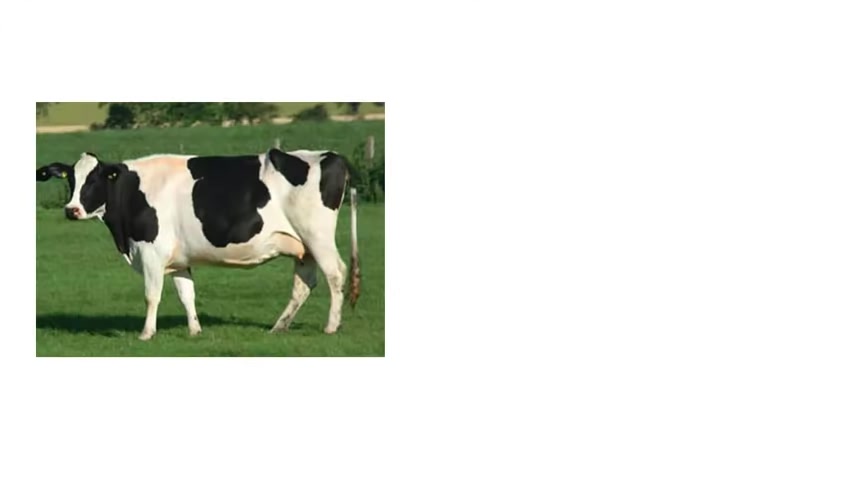
So the horse is actually balancing on its fingernail .
So then the next thing to do is to just find different animals and study exactly what their proportions are .
For instance , here with the cow , we can start to find certain land landmarks , for instance , um , the scapula here and then we have the upper arm , here's a phone .
So here's the lower arm , here's the hand .
So the finger would be , that's a fingernail .
Well , this is the rib cage .
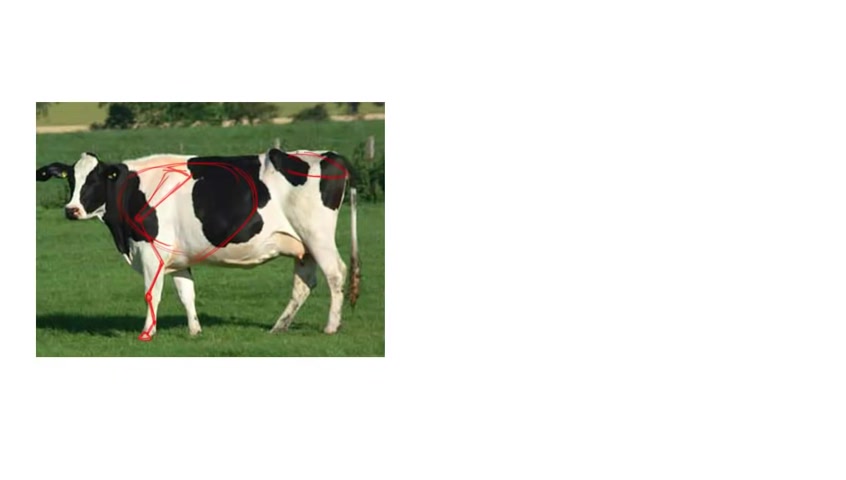
And then we have pelvis here , the spine who's here , here's a skull tailbone .
Um Here we have up her leg , lower leg , he foot to , to now it's not that easy .
But after a while you get better at seeing these similarities between animals .
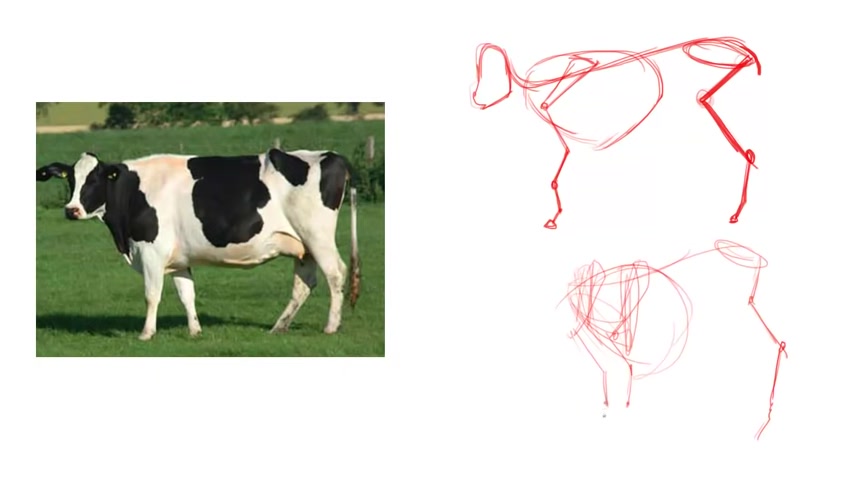
And then once you've memorized how big the proportions are in relation to each other , you can start , I may maybe I'll make a series of uh how to draw specific animals .
But the main point of this video is to show that humans and other mammals have a lot in common and finding those similarities is gonna help you draw a wide range of animals .
Good luck .
And thanks for watching .
Are you looking for a way to reach a wider audience and get more views on your videos?
Our innovative video to text transcribing service can help you do just that.
We provide accurate transcriptions of your videos along with visual content that will help you attract new viewers and keep them engaged. Plus, our data analytics and ad campaign tools can help you monetize your content and maximize your revenue.
Let's partner up and take your video content to the next level!
Contact us today to learn more.